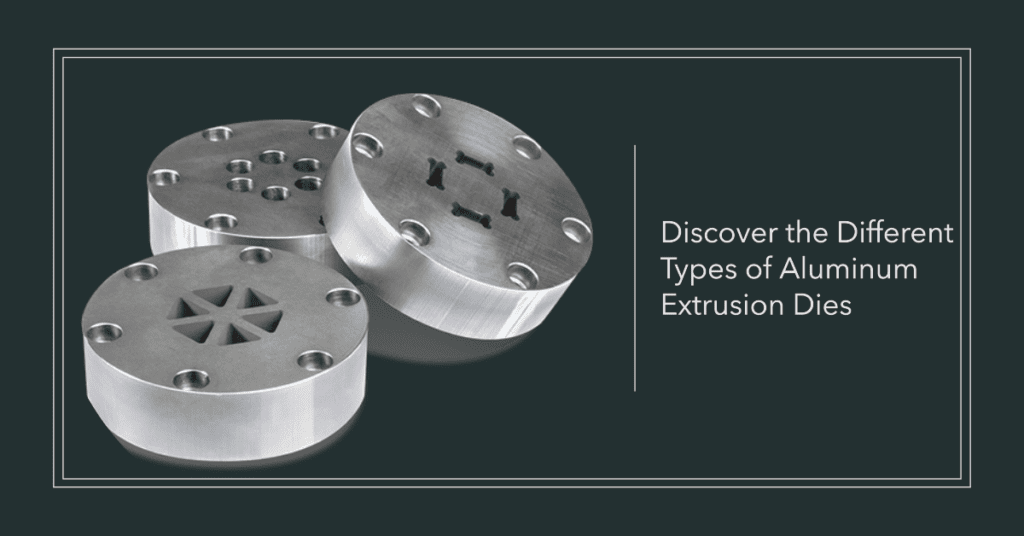
Aluminum extrusion is a process used to convert aluminum alloy into objects with a definitive cross-sectional profile for a wide range of uses. The aluminum extrusion process makes the most of aluminum’s unique combination of physical characteristics. One of the most crucial components of this process is the aluminum extrusion die. The dies are the tools that help shape the aluminum into various profiles. Understanding the different types of aluminum extrusion dies and their configurations are essential for selecting the appropriate die for a specific application.
This article aims to provide a comprehensive understanding of aluminum extrusion dies, focusing on the different types of extrusion dies, and their configurations, and answering the essential question: When to use which type of aluminum extrusion dies?
The Inner Workings of Aluminum Extrusion: A Detailed Overview
Aluminum extrusion is a fascinating process that transforms aluminum alloy into various objects with specific cross-sectional profiles. These objects are widely used in different industries due to aluminum’s unique combination of flexibility, strength, and lightness.
What are the Aluminum Extrusion Dies?
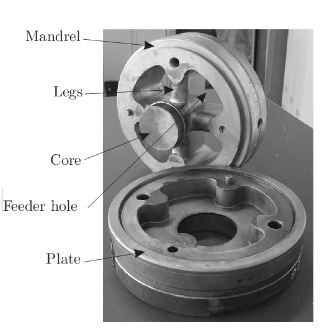
Extrusion die for round tube
Aluminum extrusion dies are specialized tools used to shape aluminum alloy into specific profiles during the extrusion process. These dies are typically made of high-strength tool steel that can withstand the high pressures and temperatures encountered during extrusion.
The dies have openings, also known as apertures, through which the aluminum alloy is forced to create the desired profile. The design and configuration of the die affect the flow of aluminum, the final profile’s shape, and the overall efficiency of the extrusion process.
The Aluminum Extrusion Process Explained
The aluminum extrusion process consists of several key steps, each of which plays a crucial role in producing the final product:
- Preparation of the Billet: The process begins with the preparation of the billet, a solid block of aluminum alloy. The billet is cut to the desired length and heated in a furnace to a temperature range of 350-500 degrees Celsius. This softens the aluminum, making it easier to force through the die.
- Preparation of the Die: While the billet is being heated, the die is also prepared by preheating it to a similar temperature. This helps to prevent the aluminum from sticking to the die during extrusion.
- Extrusion: Once the billet and die are prepared, the billet is placed in the extrusion press, and a hydraulic ram forces the softened aluminum through the die’s openings. As the aluminum passes through the die, it takes on the cross-sectional shape of the die’s openings, forming the desired profile.
- Cooling: After exiting the die, the extruded aluminum profile is cooled, usually by air or water. This helps to solidify the aluminum and maintain its shape.
- Stretching: Once the profile has cooled and solidified, it is stretched to straighten it and align its internal structure. This is usually done using a stretching table.
- Cutting: After stretching, the profile is cut to the desired length using a saw or other cutting equipment.
- Aging: The final step in the extrusion process is aging. This involves heating the extruded profile to a specific temperature and holding it there for a set period to harden and strengthen the aluminum.
Throughout this process, various factors, such as the temperature of the billet and die, the pressure applied by the hydraulic ram, and the rate at which the aluminum is extruded can affect the final profile’s quality and properties.
What Are the Key Categories of Aluminum Extrusion Dies?
Aluminum extrusion is a widely utilized manufacturing technique that transforms aluminum alloys into specific shapes with a uniform cross-sectional profile. This technique is central to various applications, from constructing building frames to creating automotive parts and intricate components in electronic devices.
A critical factor in this process is the aluminum extrusion die, a tool designed with openings or apertures that mold the aluminum into the desired shape. Now, let’s delve into the intricacies of the key categories of aluminum extrusion dies, examining their characteristics, applications, and the vital role they play in the extrusion process.
Unraveling the Three Main Categories
Aluminum extrusion dies primarily fall under three main categories: solid dies, semi-hollow dies, and hollow dies. These classifications are based on the type of profile they produce:
- Solid Dies
Solid dies are specifically engineered to create profiles that are entirely solid, meaning they lack any enclosed voids or openings. These dies are fundamental in the production of structural components such as beams, bars, and rods. Their application is crucial in a variety of industries, from construction and automotive to electronics and industrial machinery.
The precise design and manufacturing of solid dies ensure the production of high-quality components with tight tolerances and a smooth surface finish. Their robustness and durability make them suitable for high-volume production, contributing to the efficiency and cost-effectiveness of the extrusion process.
- Semi-Hollow Dies
Semi-hollow dies are designed to produce profiles that have partially enclosed voids or openings. These profiles often find applications where there is a need for a balance between structural strength and weight reduction. Semi-hollow dies are commonly used in the production of automotive components, building materials, and transportation equipment.
The design of semi-hollow dies requires a thorough understanding of the material flow characteristics and the extrusion process to ensure the final profile has the desired properties. Their application helps in achieving complex designs that would be challenging with solid or hollow dies while maintaining a balance between weight and structural integrity.
- Hollow Dies
Hollow dies are crafted for the production of profiles with completely enclosed voids or openings, such as tubes, pipes, and other hollow sections. These profiles are widely used in applications that require lightweight components with high stiffness and strength, such as aerospace, automotive, and construction industries.
The design of hollow dies is particularly challenging due to the complexity involved in achieving uniform material flow and maintaining the desired wall thickness throughout the profile. Special considerations are required to prevent defects such as seam lines and uneven wall thickness. The use of hollow dies enables the production of intricate hollow profiles with high precision and consistency, which is essential for applications with stringent quality and performance requirements.
Configuration Types of Extrusion Dies
Extrusion die configuration refers to the arrangement and design of the openings in an extrusion die that determine the shape and properties of the extruded profile. The configuration is influenced by various factors such as the complexity of the desired profile, the type of aluminum alloy used, and the required production volume. It encompasses aspects like the number of openings, their shape and size, and the arrangement of different sections of the die.
The configuration of an extrusion die is a pivotal aspect of the extrusion process. There are primarily three common configurations:
- Single Opening Dies: These are dies with a single opening, used to produce one profile at a time. Ideal for creating simple profiles or when the production volume is low.
- Multi-Opening Dies: Dies with multiple openings, designed to produce several profiles simultaneously. These are optimal for creating complex profiles or when the production volume is high.
- Co-Extrusion Dies: These specialized dies allow the simultaneous extrusion of two or more different aluminum alloys through the same die, resulting in a single profile with varying properties across different sections.
Decoding Solid Dies: Structure and Configurations
Aluminum extrusion is a process used to transform aluminum alloy into objects with a definitive cross-sectional profile for a wide range of uses. The extrusion process makes the most of aluminum’s unique combination of physical characteristics. Its malleability allows it to be easily machined and cast, and yet aluminum is one-third the density and stiffness of steel so the resulting products offer strength and stability, particularly when alloyed with other metals.
What are the Solid Aluminum Extrusion Dies?
Extrusion dies are specialized tools used in the extrusion process to shape the aluminum alloy as it is forced through the die opening under high pressure. Solid dies are one of the main types of aluminum extrusion dies. They are designed to produce solid profiles, which means the profiles do not have any enclosed voids or openings. These profiles are often used in structural applications where strength and stability are of utmost importance. Solid dies are engineered with great precision to ensure that the extruded profiles have the desired dimensions, tolerances, and surface finish.
Solid Dies Configurations
The configuration of a solid die is determined by the shape and dimensions of the desired profile. It includes the design of the die opening, the bearing surface, and the land. The die opening is the part of the die through which the aluminum alloy is extruded. Its shape and size determine the cross-sectional shape and dimensions of the extruded profile.
The bearing surface is the part of the die that controls the flow of the material and helps to achieve the desired surface finish. The land is the section of the die that provides support to the bearing surface and helps to maintain the correct alignment during the extrusion process.
- Die Opening: The design of the die opening is crucial in determining the shape and dimensions of the extruded profile. It needs to be carefully engineered to ensure that the material flows uniformly across the entire width of the opening. This is essential for achieving a uniform wall thickness and preventing defects such as warping or twisting.
- Bearing Surface: The bearing surface is the part of the die that comes in contact with the extruded material. It plays a crucial role in controlling the material flow and achieving the desired surface finish. The length and design of the bearing surface need to be optimized to minimize friction and prevent defects such as surface scratches or marks.
- Land: The land is the section of the die that provides support to the bearing surface. It helps to maintain the correct alignment of the die during the extrusion process and ensures that the extruded profile has the correct dimensions and tolerances.
Importance of Solid Dies Configurations
The configuration of a solid die is of great importance in determining the quality and properties of the extruded profile. It impacts the flow of the material, the surface finish, and the dimensional accuracy of the profile. A well-designed die configuration can help to achieve a uniform material flow, minimize defects, and optimize the extrusion process.
- Uniform Material Flow: A well-designed die configuration ensures that the material flows uniformly across the entire width of the die opening. This is essential for achieving a uniform wall thickness and preventing defects such as warping or twisting.
- Surface Finish: The bearing surface of the die plays a crucial role in determining the surface finish of the extruded profile. A well-designed bearing surface can help to minimize friction and prevent surface defects such as scratches or marks.
- Dimensional Accuracy: The land of the die helps to maintain the correct alignment of the die during the extrusion process. This is essential for ensuring that the extruded profile has the correct dimensions and tolerances.
Try Prolean Now!
Unlocking the Potential of Semi-Hollow Dies and Configurations
Semi-hollow dies, a type of aluminum extrusion dies, have a crucial role in this process. These are used to create profiles with partially enclosed voids or openings. This type of die finds application in producing profiles that strike a balance between structural integrity and lighter weight.
Semi-Hollow Dies Configurations
The configuration of a semi-hollow die is influenced by the shape and dimensions of the desired profile. It involves the design of the die opening, the bearing surface, and the feeder plate. The die opening is the part of the die through which the aluminum alloy is extruded. Its shape and size determine the cross-sectional shape and dimensions of the extruded profile.

Semi-hollow extrusion dies
The bearing surface is the part of the die that controls the flow of the material and helps to achieve the desired surface finish. The feeder plate is used to control the flow of the material and helps in forming the partially enclosed voids or openings in the extruded profile.
- Die Opening: The design of the die opening is essential in determining the shape and dimensions of the extruded profile. It needs to be precisely engineered to ensure that the material flows uniformly across the entire width of the opening, which is crucial for achieving a uniform wall thickness and preventing defects.
- Bearing Surface: The bearing surface is the part of the die that comes in contact with the extruded material. It is critical in controlling the material flow and achieving the desired surface finish. The length and design of the bearing surface need to be optimized to minimize friction and prevent defects such as surface scratches or marks.
- Feeder Plate: The feeder plate is used to control the flow of the material and helps in forming the partially enclosed voids or openings in the extruded profile. It is a critical component in the design of a semi-hollow die as it influences the shape and size of the voids or openings in the extruded profile.
Importance of Semi-Hollow Dies Configurations
The configuration of a semi-hollow die is critical in determining the quality and properties of the extruded profile. It impacts the material flow, the surface finish, and the dimensional accuracy of the profile. A well-designed die configuration can help achieve a uniform material flow, minimize defects, and optimize the extrusion process.
- Uniform Material Flow: Ensuring a uniform material flow across the entire width of the die opening is crucial for achieving a uniform wall thickness and preventing defects such as warping or twisting. This uniformity is particularly important for semi-hollow dies as any inconsistency in the material flow can lead to irregularities in the partially enclosed voids or openings of the extruded profile.
- Surface Finish: The surface finish of the extruded profile is significantly influenced by the bearing surface of the die. A well-optimized bearing surface minimizes friction and prevents surface defects such as scratches or marks. This is especially important for semi-hollow profiles, as any surface defects can compromise the structural integrity of the profile.
- Dimensional Accuracy: The dimensional accuracy of the extruded profile is influenced by the alignment of the die during the extrusion process. The feeder plate plays a crucial role in maintaining this alignment and ensuring that the extruded profile has the correct dimensions and tolerances
Exploring Hollow Dies and Their Intricacies
Among the numerous types of dies used in this process, hollow dies are an essential category, designed specifically for the production of hollow profiles with entirely enclosed voids or openings. These dies are meticulously designed and fabricated to ensure the production of high-quality extruded profiles with precise dimensions and smooth surface finishes, particularly employed for the creation of hollow profiles, such as tubes and pipes, with entirely enclosed voids or openings.
Hollow Dies Configurations
The configuration of hollow dies is a critical aspect of the aluminum extrusion process, as it directly influences the quality and characteristics of the final extruded profile. Hollow dies are specifically designed to create profiles with entirely enclosed voids or openings, such as tubes, pipes, and other hollow structures. The configuration of hollow dies involves several key elements that must be precisely engineered to ensure successful extrusion:
- Die Ring: The die ring is the outer component of the die and is designed to provide the necessary structural support to withstand the high pressures encountered during extrusion. It is typically made of high-strength steel and is carefully machined to ensure precise alignment with the other components of the die.
- Mandrel: The mandrel is the central component of the hollow die and is responsible for shaping the interior profile of the extruded product. It is placed in the center of the die opening and its shape determines the internal dimensions and configuration of the enclosed void or opening in the extruded profile.
- Feeder Plate: The feeder plate is positioned between the die ring and the mandrel and is designed to distribute the aluminum alloy uniformly across the width of the die opening. It plays a crucial role in maintaining a consistent material flow and achieving a uniform wall thickness in the extruded profile.
- Bearing Surface: The bearing surface is the part of the die that comes into direct contact with the aluminum alloy during extrusion. It is meticulously polished to minimize friction and ensure a smooth surface finish on the extruded profile.
Guidelines: Selecting the Appropriate Aluminum Extrusion Dies
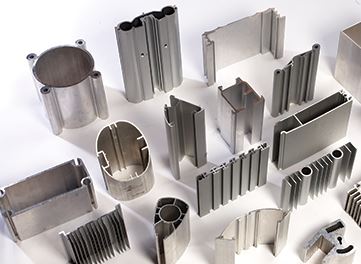
Aluminum extruded parts
The selection of the correct type of aluminum extrusion die is crucial for achieving the desired profile characteristics and ensuring the efficiency of the extrusion process. Here are some general guidelines for selecting the appropriate type of aluminum extrusion die based on the requirements of your project:
- Solid Profiles: For profiles without any enclosed voids or openings, such as structural components, bars, and rods, solid dies are the most appropriate choice. Solid dies are designed to create solid profiles with a uniform cross-section and are commonly used in various industries for manufacturing structural components.
- Partially Enclosed Profiles: If the desired profile has partially enclosed voids or openings, semi-hollow dies are the most suitable option. Semi-hollow dies are designed to produce profiles with partially enclosed voids, striking a balance between structural integrity and lighter weight. These are commonly used for manufacturing profiles that require a combination of strength and lightweight, such as window frames and railings.
- Fully Enclosed Profiles: For profiles with entirely enclosed voids or openings, such as tubes and pipes, hollow dies are the most appropriate choice. Hollow dies are designed to create profiles with fully enclosed voids or openings and are commonly used for manufacturing tubes, pipes, and other hollow structures.
- Complex Profiles: For profiles with complex shapes or multiple materials, co-extrusion dies or multi-opening dies may be required. Co-extrusion dies enable two or more different aluminum alloys to be extruded simultaneously through the same die, resulting in a single profile with varying properties in different sections. Multi-opening dies possess multiple openings and are employed to produce several profiles simultaneously.
Prolean’s Aluminum Extrusion Services
Prolean offers a comprehensive range of aluminum extrusion services, including custom extrusion, fabrication, finishing, and assembly. Our team of experienced professionals can assist you in selecting the appropriate type of aluminum extrusion dies and configurations for your specific application.
We are committed to providing high-quality aluminum extrusion products and services that meet or exceed our customers’ expectations. Contact us today to learn more about our aluminum extrusion services and how we can help you with your next project.
Conclusion: Selecting the Right Aluminum Extrusion Die for Your Project
Selecting the right aluminum extrusion die is a critical step in the manufacturing process, as it directly influences the quality, dimensions, and properties of the final extruded profile. With various types of dies available, each designed for specific applications, understanding the key differences between solid, semi-hollow, and hollow dies, and their respective configurations, is essential.
Solid dies are best suited for profiles devoid of any enclosed voids or openings, while semi-hollow dies are employed for profiles with partially enclosed voids, offering a balance between structural integrity and lighter weight. Hollow dies, on the other hand, are designed for profiles with entirely enclosed voids or openings, such as tubes and pipes. Additionally, co-extrusion dies and multi-opening dies cater to more complex profiles or high-volume production needs.
In conclusion, the selection of the appropriate aluminum extrusion die should be based on several factors, including the desired profile characteristics, production volume, material properties, and budget constraints. Consulting with an experienced extrusion die manufacturer or a specialist can provide valuable insights and help in making an informed decision. Remember, the right die selection can make a significant difference in the overall success of your project.
FAQs
What are the main types of aluminum extrusion dies?
The main types of aluminum extrusion dies are solid dies, semi-hollow dies, and hollow dies. Solid dies are used for creating solid profiles, semi-hollow dies are used for creating profiles with partially enclosed voids, and hollow dies are used for creating profiles with entirely enclosed voids.
What are the common configurations of extrusion dies?
Common configurations of extrusion dies include single opening dies, multi-opening dies, and co-extrusion dies. Single opening dies have one opening, multi-opening dies have multiple openings, and co-extrusion dies allow two or more different aluminum alloys to be extruded simultaneously.
How to select the appropriate type of aluminum extrusion die?
Selecting the appropriate type of aluminum extrusion die depends on various factors, including the profile’s complexity, the required strength and weight, and the production efficiency. It is essential to consider these factors and consult with experienced professionals to select the appropriate die for a specific application.
What are the benefits of using hollow profiles?
Hollow profiles offer reduced weight without compromising structural integrity. They are suitable for applications requiring lightweight structures, such as transportation, construction, and aerospace.
Can different aluminum alloys be extruded together?
Yes, different aluminum alloys can be extruded together using co-extrusion dies. Co-extrusion dies allow two or more different aluminum alloys to be extruded simultaneously through the same die to create a single profile with different properties in different sections.

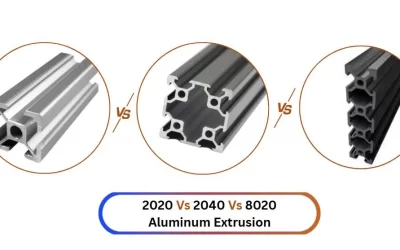
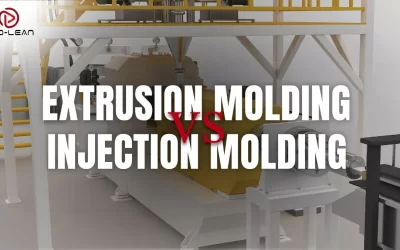
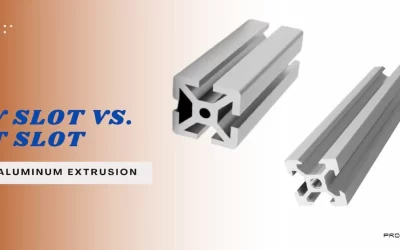
After a billet is pushed through in the aluminum extrusion process, the leftover material in the welding chamber, typically called the “butt end,” is removed and recycled. This excess aluminum is re-melted and reused, making the process efficient and sustainable.